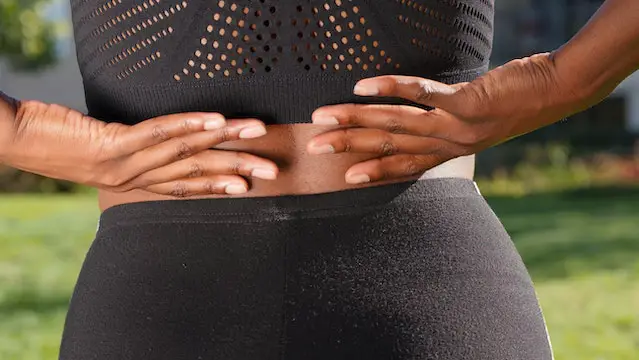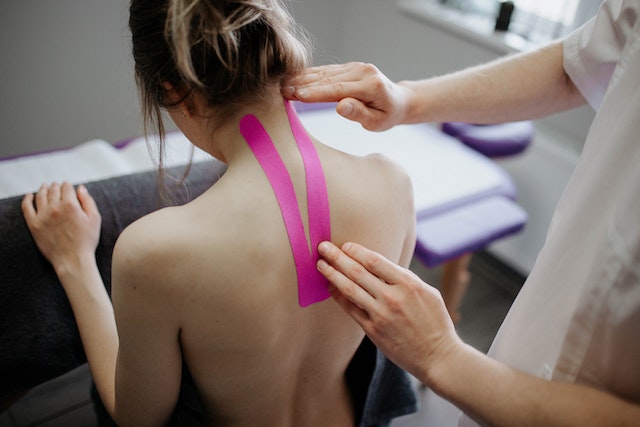Scoliosis is a deviationón lateral vertebral column of más de 10 degrees of ácobb angle with rotationón vertebral. In order to better understand what happens, it is necessary to know that the denominationón for scoliosis comes from the Greek word scoliosis, which means “twist” and which affects approximately one 3% of the populationón.
Lo máIt is common that this problem begins to appear when people are of the age of Come in 10 and 14 años and, además, affects in greater proportionón women than men, with some statesístatistics that reflect that approximately one 80% of the cases occur between the géfeminine nero.
When a person suffers from it or has had somethingún a close case of scoliosis it is common for him to mentionón al ácobb angle, since it is a key element to be able to classify scoliosis and to be able to know its incidence in a person. Thus, thenóWe are not going to explain whaté are you thereé sessionón has with scoliosis.
Index
¿Whaté is he ácobb angle?
The spine of human beings is made up of different pieces that adopt a shape similar to that of a cube and which we know as vévertebrae, what isán positioned one above the other with the same positionónumber and orientationón. In this way we can find a straight image similar to that of a column in the cases in which it is observed throughés of an imaging test such as an x-rayía, from the front and back view.
In case you suffer from scoliosis, the Vévertebrae are displaced laterally, which in turn causes a rotational movementón and tilt usón in each of them; and this gives rise to the visual appearance of the so-called choose curveótica. Therefore, in scoliosis, not only does a deviationón lateral, but alsoéthere is no component of rotationón.
As we have mentioned, scoliosis is characterized by the existence of a deviationón lateral of the vertebral column, with a áCobb angle greater than 10 degrees. The lateral curvature of the column is duly delimited and defined by the two vévertebrae that sitúwith even greater inclinationón towards concavity, one lower and one higher, receiving these the names of vértebra límite inferior y vértebra límite superior, respectively.
If we proceed to draw an líline on the tangent of the vértebra líupper limit and another on the lower, it can be seen how on the side of the concavity these two lígirls cross, giving rise toí still áthat's it. It is precisely the unión of these two lílines which gives rise to the definitionóno. of ácobb angle.
In other words, the ácobb angle is he áangle formed by inclinationóno of the vértebra lílower mite and vértebra límite superior which can be measured throughés of a radiographía, using an anteroposterior view, that is to say, a front view.
Key in monitoring scoliosis
It is áangle and méall de mediciówas not described by John Robert Cobb in the AñO 1948 and from thereí which is named as ácobb angle, Currently being used to classify and monitor scoliosis.
Keep in mind that, at the time of carrying out the medición of an x-rayía, It is considered that there may be a measurement error.ón as margin that can be placed in +-5º. Nevertheless, with the constant evolutionóno of technologyía and the advances in the field of science and health we find that with medicineón digital the margin of error is smaller, although you always have to keep it in mind.
In any of the cases, caution must be maintained when interpreting the evolutionóno scoliosis, when the change in the áCobb angle is located at about 2-3º.
Classifyón of scoliosis based onóno. of ácobb angle
according to ácobb angle we can classify the degree and type of scoliosis, foundácoming up with the following classificationón:
- Escoliosis leve: It occurs in those cases in which we find that the áCobb angle is between 10 and the 25 degrees. In this case, The guiding treatment to be able to deal with this problem is to resort to the realizationóNo of physiotherapy exercises.
- moderate scoliosis: Moderate scoliosis occurs when there is a áCobb angle from between 25 and 45 degrees. In this case beá necessary a physiotherapy treatment together with an orthopedic treatmentéI say, with the use of corsé.
- severe scoliosis: If he ácobb angle is superior to 45 degrees find usímasters in the face of severe scoliosis, case in which you canísurgical treatment becomes necessaryúrgic.
Anyways, each particular case should be examined by a professional, that in this way, attending both to ácobb angle as well as other indicatives that you can obtain by exploringón or other types of evidence, mayá determine witháIt is the best way to get the patient to face the scoliosis health problem that isá suffering.
in addition, It is important to emphasize the importance of continuous monitoring to be able to check if the evolutionón of the deviationón abnormal lateral spinal column is stabilized, if it can be treated or if, Conversely, continúa with a dispositionón a ir agravándose. As it happens in any other type of problem fíphysical or injuredón, It is essential that the patient always follow the doctor's instructions, and keep in mind their indications to perform the different exercises that may be necessary to improve their ailments and health problems.
In this way, you know whaté it is the ácobb angle and the importance that this has to be able to evaluate and monitor scoliosis. It is important to know this informationón to know the way in which both the médoctors as well as those affected by this problem can be aware of the situationón of the same.


